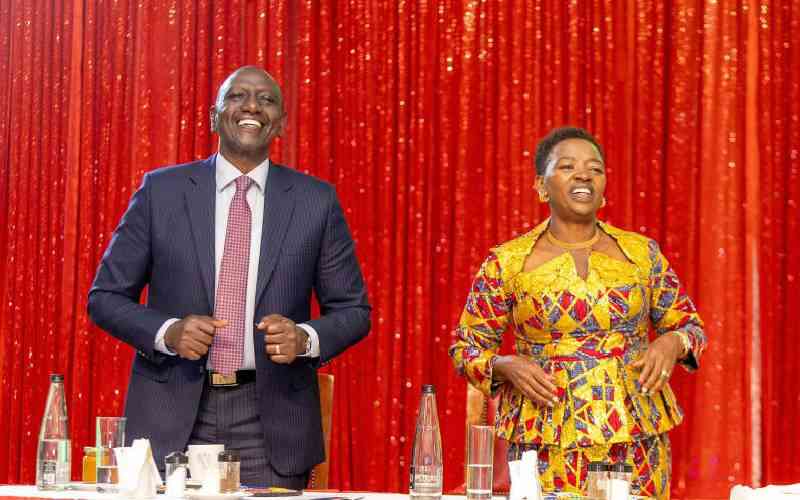BY PETER NJENGA
KENYA: Kenya hasn’twon the 10,000 metres Olympic gold in the last 45 years. And worse still, the country must wait for three years for another chance.
The man who won this medal and the first for Kenya at the Olympic Games - Naftali Temu - is deceased but his legacy lives on. So, how did it happen?
It was October 13, 1968, a Sunday at the Olympic Stadium in Mexico City and 37 runners lined up for the only final of the day - the 10,000 metres.
They were the finest distance runners in the world, having met gruesome selection criteria in their respective countries. Some lived at sea level, few at altitude. The rarefied air of Cuidad de Mexico at an elevation of 2,240 metres above sea level compared ideally with the 2500m average in most Kenyan highlands.
At the starting line-up were two young men: 23 year old Naftali Temu and Kipchoge Keino, 27. They were breathing easy. Mexico was like home, with the climate similar to Nyahururu’s where they had camped for a month under Coach Charles Mukora on a daily basis following a trail that was known as the “Agony Hill”.
It was not for the faint hearted, recalls Mukora. “The hill was tough and we were to gain a lot from this stamina conditioning.”
If the Kenyans had any ambition, they did not display it. When the gun went off, Hungarian Janos Szerenyi hit the front and remained unshaken for the next five laps before Russian Nikolay Sviridov assumed control of the pace, which was at this stage the slowest since 1924 because of the attitude factor in Cuidad de Mexico.
The game plan changed dramatically with world record holder and the best distance runner of that time Ron Clarke of Australia stepping forward. It was a fatal error. The Australian was born at sea level. He would rue his decision, which almost had him hospitalised for trying to keep pace with the highlanders.
Penultimate lap
Would he survive and take control of the situation? Time would tell. By the 19th lap, he was among those leading the race before Mexican Juan Martinez zapped ahead. The stadium exploded with hysteria from the enthusiastic home crowd.
In their reverie, they failed to notice a dark complexioned black runner of slight build join the fray in close tag with Mamo Wolde of Ethiopia, Tunisia’s Mohamad Gammoudi, a silver medallist in Rome four years earlier, Sviridov, Clarke and Keino. The race remained open until the penultimate lap when Temu and Wolde pulled ahead having dropped Gammoudi and Clarke. Keino had already pulled out with a stomach cramp.
Upon the sound of the bell, Wolde shifted gear and opened up marginally. But Temu refused to be shrugged off. Instead, he kept within striking distance, levelling on the home straight before unleashing a deadly kick to take Kenya’s first ever gold medal in a time of 29:27.40 seconds with a gap of 4 metres to spare.
As if reading from a choreographed script, team mates Keino, Amos Biwott, Ben Kogo and the 4x400m relay team of Daniel Rudisha, Hezekiel Nyamau, Naftali Bon and Charles Asati were to win gold and three silver in the conclusion of what is considered Kenya’s breakthrough in the world of distance running.
Sabina Chebichi and Lydia Stevens, though eliminated in the opening rounds, lay a firm foundation for women runners who three decades later at the Beijing Olympics would produce the first ever-gold medallist Pamela Jelimo (800m) followed by Jebet Lagat (1500m).
Stay informed. Subscribe to our newsletter
Temu’s victory always overshadows his unprecedented attempt in the marathon where he finished 19th. This went on unreported. He was the first and last athlete to attempt this suicidal double. Bear in mind he had also finished 49th in the marathon in 1964 at 19, younger than any other marathoner of our time .
Temu died of prostate cancer at Kenyatta National Hospital, aged 57.
 The Standard Group Plc is a
multi-media organization with investments in media platforms spanning newspaper
print operations, television, radio broadcasting, digital and online services. The
Standard Group is recognized as a leading multi-media house in Kenya with a key
influence in matters of national and international interest.
The Standard Group Plc is a
multi-media organization with investments in media platforms spanning newspaper
print operations, television, radio broadcasting, digital and online services. The
Standard Group is recognized as a leading multi-media house in Kenya with a key
influence in matters of national and international interest.
 The Standard Group Plc is a
multi-media organization with investments in media platforms spanning newspaper
print operations, television, radio broadcasting, digital and online services. The
Standard Group is recognized as a leading multi-media house in Kenya with a key
influence in matters of national and international interest.
The Standard Group Plc is a
multi-media organization with investments in media platforms spanning newspaper
print operations, television, radio broadcasting, digital and online services. The
Standard Group is recognized as a leading multi-media house in Kenya with a key
influence in matters of national and international interest.






